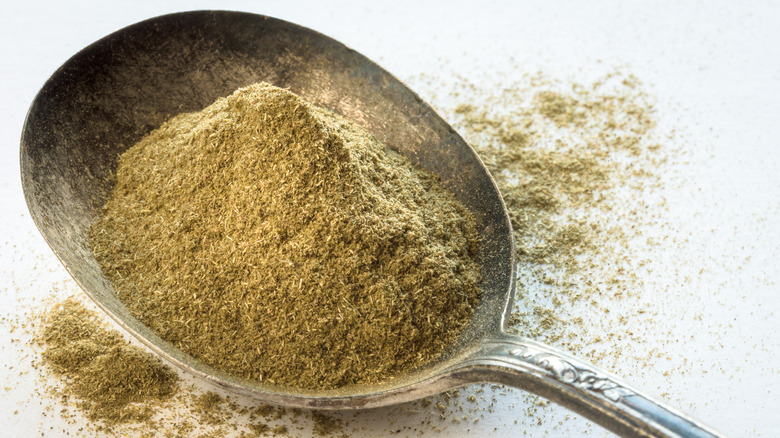The Real Reason Sassafras Root Beer Is Illegal
There's nothing like an iced cold root beer soda on a hot day to quench your thirst, or a delectable root beer float with vanilla ice cream and topped with whipped cream to sweeten your day. Or, perhaps, as Bobby Flay recommends, you might add some bourbon to your root beer float for a little extra kick (via Food Network). The "root" in root beer is named for the root of the sassafras tree, an ingredient that has been used in traditional root beer recipes since the 1860s. In fact, sassafras consumption dates back even further, as indigenous peoples used it for medicinal purposes (via McGill). All Recipes reported that sassafras — aka ague tree, cinnamon wood, or saxifrax — has also been used to flavor toothpaste, in soap, and as an anti-itch solution for bug bites.
Despite its many apparent uses, sassafras was outlawed by the FDA in 1976 as it contains safrole, which allegedly causes cancer in rats (via All Recipes).
Getting to the root of the problem
Does cancer in rats necessarily equate to cancer in humans? In this case, maybe not. All Recipes reported that in some of these studies, the rats were given humongous amounts of root beer that no one person would realistically drink in one day, that is, up to 32 bottles. And, as McGill pointed out, other legal foods, including nutmeg, also contain safrole. Despite the seemingly inconclusive nature of the studies, sassafras has been deemed illegal and major root beer producers such as A&W replaced it with other ingredients, including wintergreen (via All Recipes). According to McGill, root beer also sometimes contains artificial sassafras, which, as All Recipes reports, is a common ingredient used in root beer production among Amish communities, among whom the beverage is exceptionally popular.
Despite the illegality of sassafras use for consumption, there are still die-hard root beer fans that make their own beverages containing the root. According to All Recipes, the "true root beer aficionados" will forage for their own sassafras, which can often be found growing in the shade in eastern states.

